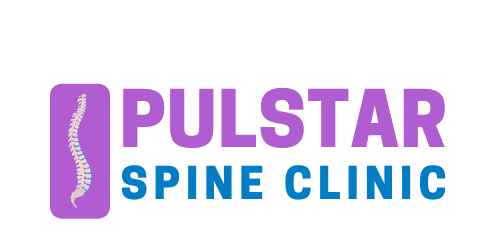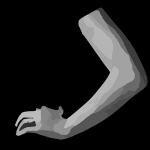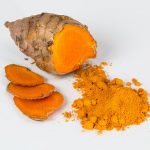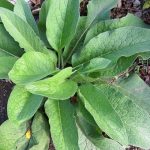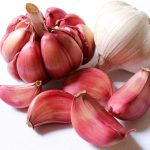Home Remedies For Tennis Elbow
Tennis elbow, also known as lateral epicondylitis is a condition in which the outer parts of the elbow becomes painful and tender, according to Wikipedia. Usually caused by the inflammation of tendons that attach the extensor carpi radialis brevis to the outer bony prominence which is lateral epicondyle of the elbow. The pain may also extend into the back of the forearm and grip strength may become weak. The onset of symptoms is generally gradual. A similar instance of this condition is Golfer’s elbow which affects the inside of the elbow. In this post, we are discussing a few home remedies for tennis elbow.
The name as it sounds could definitely paint a picture in your mind that this injury is limited to tennis players. Truly it happens more often to tennis players, but it could also extend to anyone who strains the tendons of the forearm.
The major causes of this seeming predicament include
Constant extended and reckless motion of the wrist in activities like tennis, hedge clipping, excessive use of a hammer or screwdriver, painting, or any activity that requires excessive constant gripping or squeezing which makes the elbow prone to sustaining a tennis elbow.
Specifically, in the game of tennis, there are certain moves and skills that can push the arm into sustaining lateral epicondylitis:
- Using the one-handed backhand with poor technique or form
- Bending the wrist due to late forehand swinging motion
- During serving, sometimes especially without skill, the wrist can turn around and snap which usually tends to lead to tennis elbow
The common signs and symptoms attached to this product include
The symptoms of this phenomenon can vary from instance to instance. However, we have spotted a few that extend almost for every person with this injury.
Elbow pain
Intense pain is usually experienced in the entire arm while trying to raise the arm or grasp stuff from their weights.
Wrist pain
- Since the wrists are connected to the elbow, tendencies of the wrist securing some pain on its own are very high.
- Difficulty in fully extending the arm: Extending the arm fully could also make of difficulty.
Weak grasp: Even if you successfully raise something up, you might still experience some weakness in your whole arm.
The ache in the outer elbow: The pains you may experience from such an injury usually tend to extend to the outer elbow as well – which tend to intensify the pain, as it happens in most cases.
The main cause of this ailment is the extreme use of the muscles and tendons of your elbow – which could result in this or worse.
The ailment could be treated through quite a lot of different methods.
Therapy
If your symptoms are related to tennis, your doctor may suggest that experts evaluate your tennis technique or the movements involved with your job tasks to determine the best steps to reduce stress on your injured tissue.
A physical therapist can teach you exercises to do gradually stretch and strengthen your muscles, especially the muscles of your forearm. Eccentric exercises, which involve lowering your wrist very slowly after raising it, are particularly helpful. A forearm strap or brace may reduce stress on the injured tissue.
Surgical or other procedures
Injections
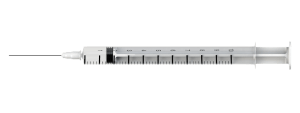
Dry needling
In this method a needle pierces the damaged tendon in many places — can also be helpful.
Ultrasonic tenotomy or Tenex procedure
In this procedure, under ultrasound guidance, a doctor inserts a special needle through your skin and into the damaged portion of the tendon. Ultrasonic energy vibrates the needle so swiftly that the damaged tissue liquefies and can be suctioned out.
Surgery
If your symptoms haven’t improved after six to 12 months of extensive non-operative treatment, you may be a candidate for surgery to remove damaged tissue. These types of procedures can be performed through a large incision or through several small incisions. Rehabilitation exercises are crucial to recovery.
There are a few methods used to treat Tennis elbow at home, out of which we would mention a few.
Icing the area affected: You could ice the affected area for about 20 minutes about twice a day to help reduce the inflammation and relieve pain in that area. You could wrap it up in a towel or paper cup by tearing away the top rim as the ice melts is an easy way to use ice. No matter what you use in wrapping the ice, just make sure your skin does not come in direct contact with your skin. You may also proceed to use an elbow strap or splint to help take the pressure off the inflamed tendon.
When your muscles or tendons are strained, damaged or inflamed, ice packs are an excellent way to control the swelling and pain. You can wrap ice cubes in a towel and hold it against the elbow for 20 minutes at a time. Be careful not to try any physical activity or move the elbow too quickly following ice pack application, as the muscles will be cold and less flexible, making them more prone to injury immediately following the treatment.
Exercising the harmed areas: You may also take on several exercises to promote and increase the flexibility and strength of the affected elbow, all of which you could perform at home easily.
Keeping the affected area at rest: The human body tends to heal to a great extent when it experiences to rest. The body regenerates in energy and builds up.
Use of over-the-counter anti-inflammatory medications: There are many body pain relievers and anti-inflammatory relievers on the market.
Home Remedies for Tennis Elbow
Turmeric
The natural anti-inflammatory nature of turmeric makes it valuable for many different physical conditions, particularly ones like tennis elbow, where the swelling of the muscles can make moving the joints painful, and prevent you from performing normal tasks. Curcumin, the active ingredient in turmeric, is also a natural analgesic and packed with antioxidants, which will speed the healing process of the damaged tendons.
Ginger
Boiling ginger root in water can produce a potent mixture of nutrients that can be applied directly on the swollen or inflamed elbow, providing fast and long-lasting relief. You can also mix ginger with honey and water and drink the concoction 1-2 times per day, as the anti-inflammatory properties of ginger, which has an active ingredient gingerol, can also work from the inside out.
Comfrey Leaves
A lesser known herbal remedy, comfrey leaves are natural analgesics and anti-inflammatory substances. You can soak comfrey leaves in water, apply them directly to the inflamed area, and then wrap the elbow in a cloth. The active ingredients and compounds of the leaves will eliminate swelling and pain in the elbow and forearm. Use of comfrey is restricted in countries such as the UK and US, so consult your local health specialist before use.
Garlic
Filled with antioxidants, anti-inflammatory compounds, sulfur and selenium, garlic is a powerful way to treat the pain and discomfort of tennis elbow. Crush 4-5 cloves of garlic and apply the paste directly to the inflamed area. The powerful active ingredients, including allicin, can quickly relieve the pain and swelling of your tennis elbow.
St. John’s Wort
As an anti-inflammatory and analgesic substance, St. John’s Wort has been recommended for tennis elbow for decades. You can apply St. John’s Wort oil directly on the inflamed area, take supplements, or mix this herbal powder in water and drink it twice a day for fast relief.
